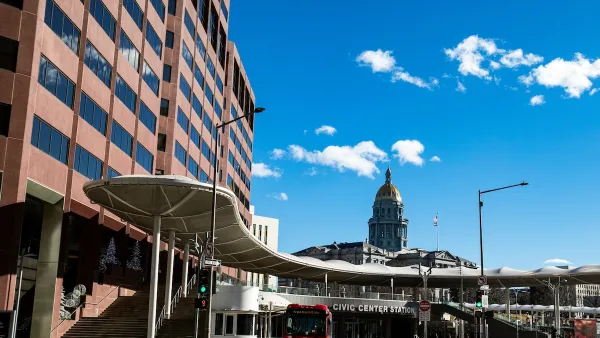A couple of weeks ago, I was on a bus in Chicago and noticed something that I had not noticed before- that how you paid to get on the bus affected how long you took to get on the bus. People who flashed monthly passes boarded in a few seconds. People who put in dollar bills got on a lot more slowly, as they fumbled for the right number of bills. People who had to pay change took longer still. So to speed buses’ on-time performance (pun intended) transit agencies should encourage the former and discourage the latter.
A couple of weeks ago, I was on a bus in Chicago and noticed
something that I had not noticed before- that how you paid to get on the bus
affected how long you took to get on the bus.
People who flashed monthly passes boarded in a few seconds. People who put in dollar bills got on a lot
more slowly, as they fumbled for the right number of bills. People who had to pay change took longer
still.
So to speed buses' on-time performance (pun intended)
transit agencies should encourage the former and discourage the latter.
How can this be done?
One way is to manipulate the fare structure to disfavor change-fumbling
and encourage faster modes of payment- and the national transit funding crisis
provides a perfect opportunity to do this.
Suppose a transit agency has lost 20% of its revenue due to the
recession. The typical transit agency
response is either to cut service (the worst possible option, as I have pointed
out elsewhere).* The second worst option is to raise fares just enough to cover
the deficit- a policy that reduces ridership of course, and does no affirmative
good.
But if the agency wants to make buses run faster, it can
combine fare increases with positive steps to encourage use of passes and/or
dollar bills. In particular, the transit
agency should raise fares to the next dollar increment, and use any surplus to
either increase service or reduce the price of weekly and monthly passes. Thus, riders would have to pay more, but at
least they'd be getting some positive benefit from their fare increase.
For example, suppose the Anycity Transit Agency (ATA)
currently charges $1.25 per ride, and needs to raise fares to make up for lost
government support. The unimaginative
but common decision would be to raise fares to $1.75 (and/or cut service). In no way does this decision leave riders
better off; they have to pay more and fumble for even more quarters than
usual.
Instead, ATA should raise fares to $2. Even after accounting for revenue lost due to
lower ridership, ATA is left with a surplus.
ATA should use this surplus to lower the price of monthly passes (as
well as increasing service). This
combination of fare increases and lower fares speeds up bus performance in two
ways. First, riders will be encouraged
to use passes (the fastest mode of payment).
Second, riders will not need to fumble for quarters, so even one-time
riders will have a faster (if more expensive) commute. In addition, cheaper passes may create
ridership increases at least partially offsetting what ATA has lost due to its
base fare increase.

Analysis: Cybertruck Fatality Rate Far Exceeds That of Ford Pinto
The Tesla Cybertruck was recalled seven times last year.

National Parks Layoffs Will Cause Communities to Lose Billions
Thousands of essential park workers were laid off this week, just before the busy spring break season.

Retro-silient?: America’s First “Eco-burb,” The Woodlands Turns 50
A master-planned community north of Houston offers lessons on green infrastructure and resilient design, but falls short of its founder’s lofty affordability and walkability goals.

Test News Post 1
This is a summary

Analysis: Cybertruck Fatality Rate Far Exceeds That of Ford Pinto
The Tesla Cybertruck was recalled seven times last year.

Test News Headline 46
Test for the image on the front page.
Urban Design for Planners 1: Software Tools
This six-course series explores essential urban design concepts using open source software and equips planners with the tools they need to participate fully in the urban design process.
Planning for Universal Design
Learn the tools for implementing Universal Design in planning regulations.
EMC Planning Group, Inc.
Planetizen
Planetizen
Mpact (formerly Rail~Volution)
Great Falls Development Authority, Inc.
HUDs Office of Policy Development and Research
NYU Wagner Graduate School of Public Service




























